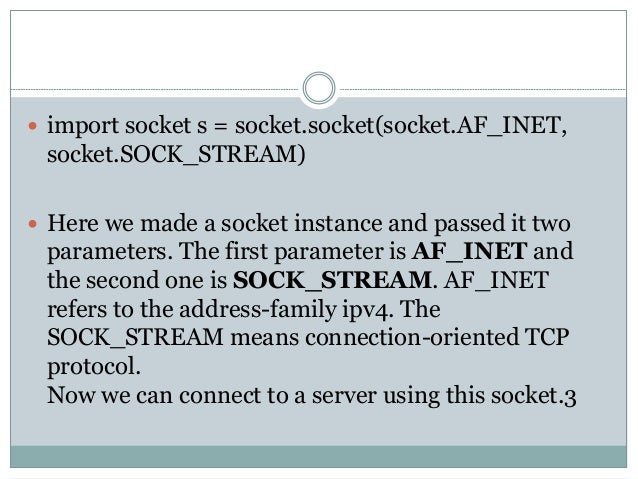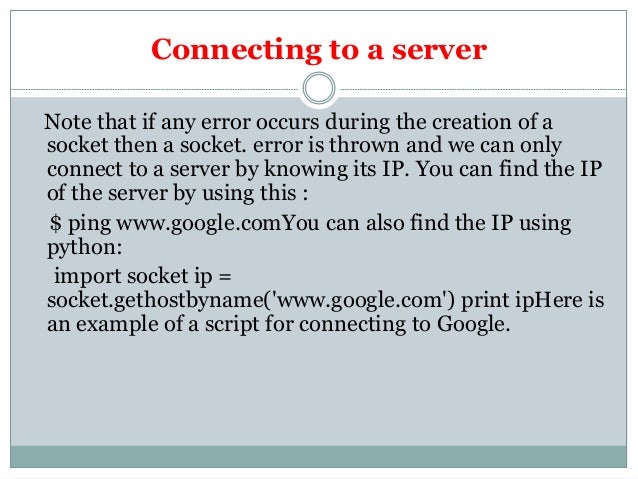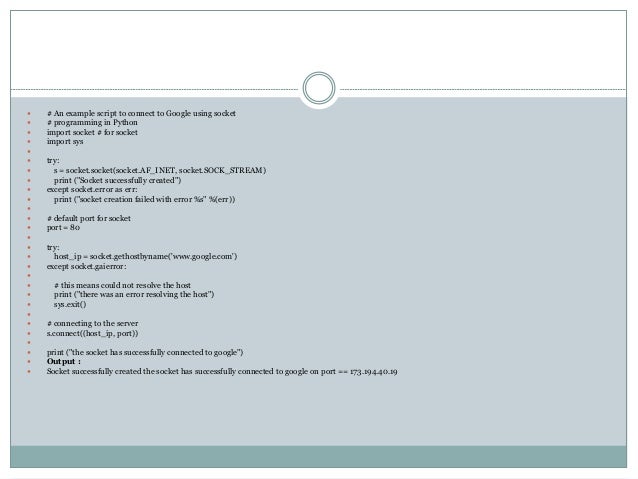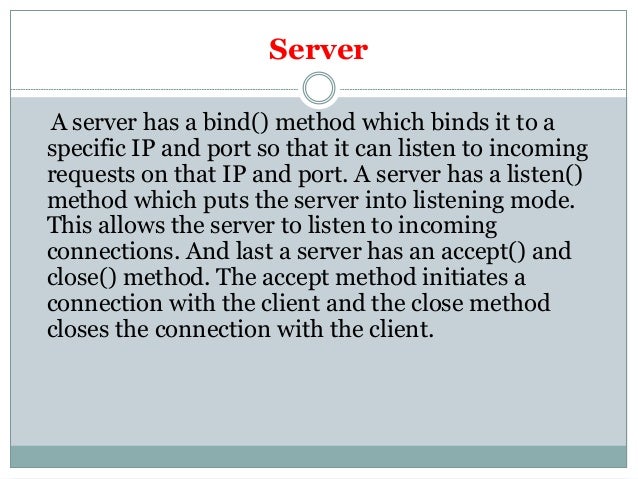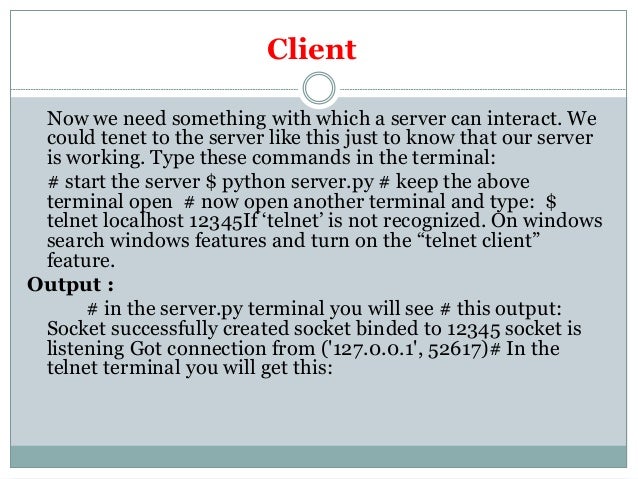The document explains socket programming, which facilitates communication between two nodes on a network through a server-client model. It outlines how to create sockets using Python, connect to a server, and perform operations like binding, listening, and accepting connections. Additionally, it provides example scripts for server and client interactions and troubleshooting tips for common issues.


